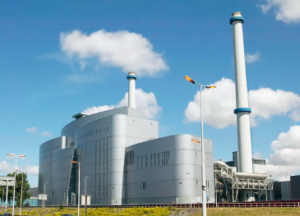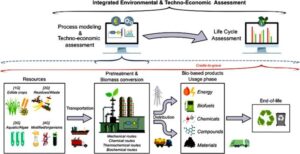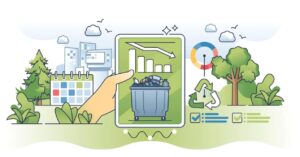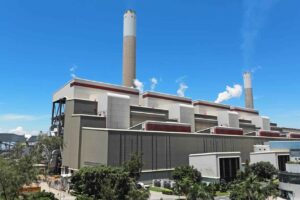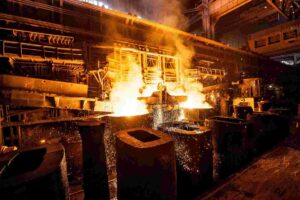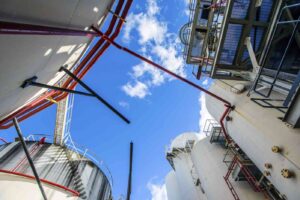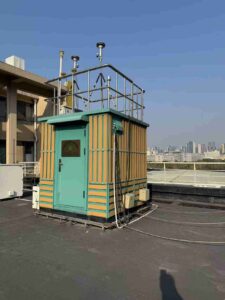Methanol production drives many industries. It plays a crucial role in chemicals and energy. Methanol serves as a key feedstock and fuel. Its production impacts sectors from automotive to pharmaceuticals. This vibrant process fosters innovation and economic growth.
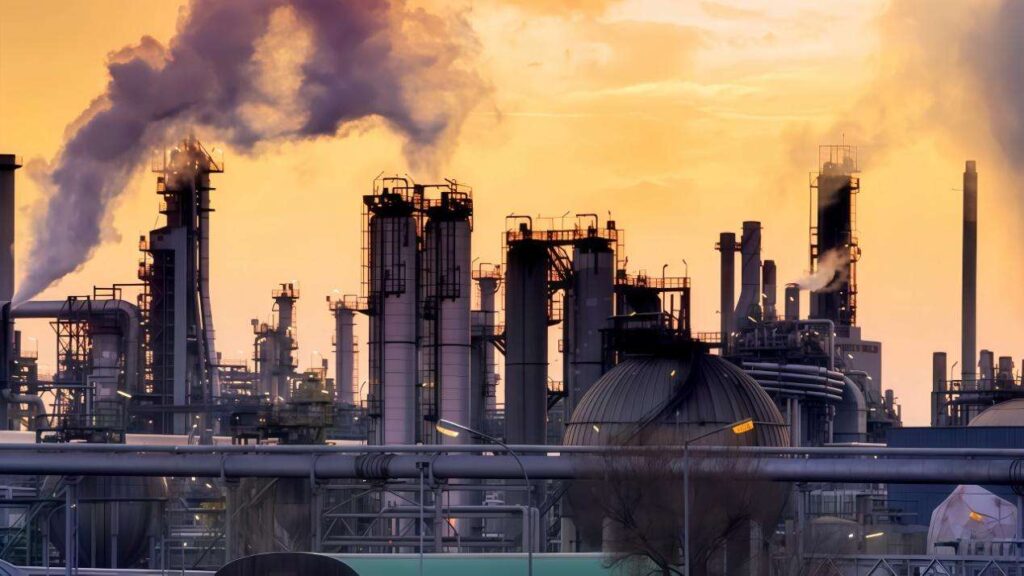
Syngas stands as the backbone of methanol synthesis. It powers reactions that create high-quality methanol. Moreover, syngas fuels efficient and scalable production. The blend’s quality directly affects product yield.
Precise syngas analysis boosts process optimization. Real-time monitoring helps adjust reaction conditions. It ensures consistent quality and efficiency. In summary, accurate syngas analysis drives performance, reduces waste, and saves cost. These improvements enhance reliability and spark progress in methanol production.
How Does Syngas Composition Impact Methanol Synthesis?
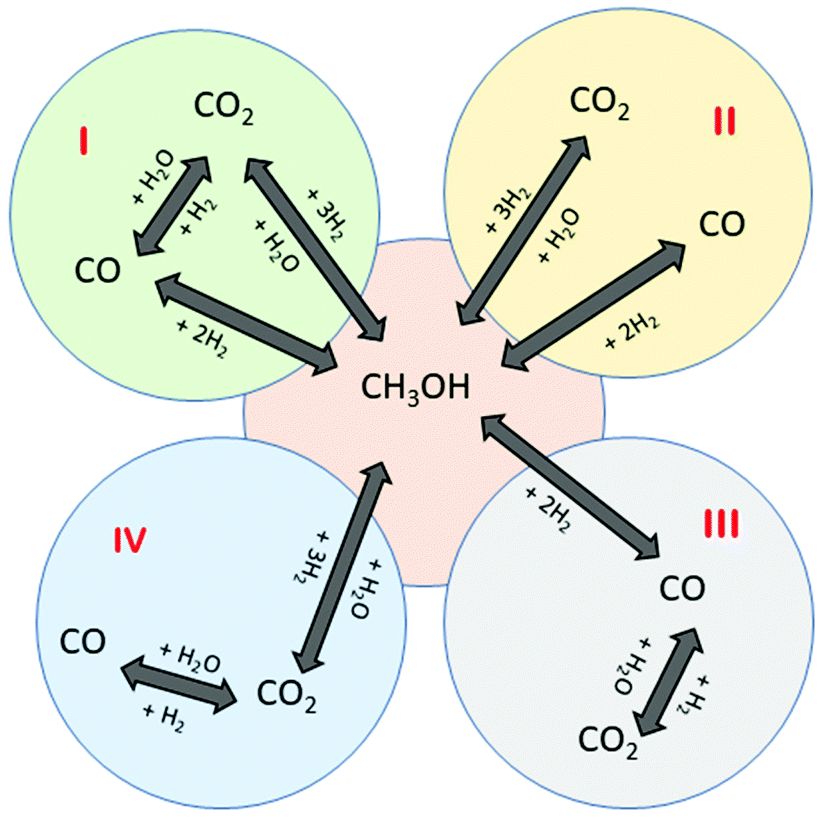
Syngas acts as the lifeblood of methanol synthesis. It usually contains carbon monoxide (CO), carbon dioxide (CO₂), and hydrogen (H₂). Typically, industrial syngas maintains a stoichiometric ratio of H₂/(CO + CO₂) between 2.0 and 2.2. For example:
- Coal-derived syngas: Higher CO (40–60%) and CO₂ (5–15%), with H₂ at 25–35%.
- Natural gas-based syngas: Lower CO (10–15%) but higher H₂ (70–80%).
Other trace gases also exist. Each element shapes the reaction dynamics and product quality.Now, consider the chemical reactions. CO and H₂ react to form methanol. Similarly, CO₂ and H₂ also form methanol and water. Key reactions include:
1.CO hydrogenation:CO + 2H₂ → CH₃OH(ΔH = -90.6 kJ/mol)
2.CO₂ hydrogenation:CO₂ + 3H₂ → CH₃OH + H₂O(ΔH = -49.5 kJ/mol)
Moreover, By converting CO and water into CO₂ and additional H₂, the WGS reaction can help achieve the desired syngas composition for methanol synthesis. The water-gas shift (WGS) reaction is often employed to adjust the H₂/CO ratio: CO+H2O→CO2+H2.
However, careful control is necessary, as excessive CO₂ production can lead to the negative effects on the process. What is the negative effect? Excessive CO₂ can be detrimental, leading to lower reaction kinetics and increased catalyst deactivation, especially when using biomass-derived syngas with high CO₂ content. Therefore, syngas analysis is important in methanol production.
Why is Syngas Analysis Essential for Optimal Methanol Production?
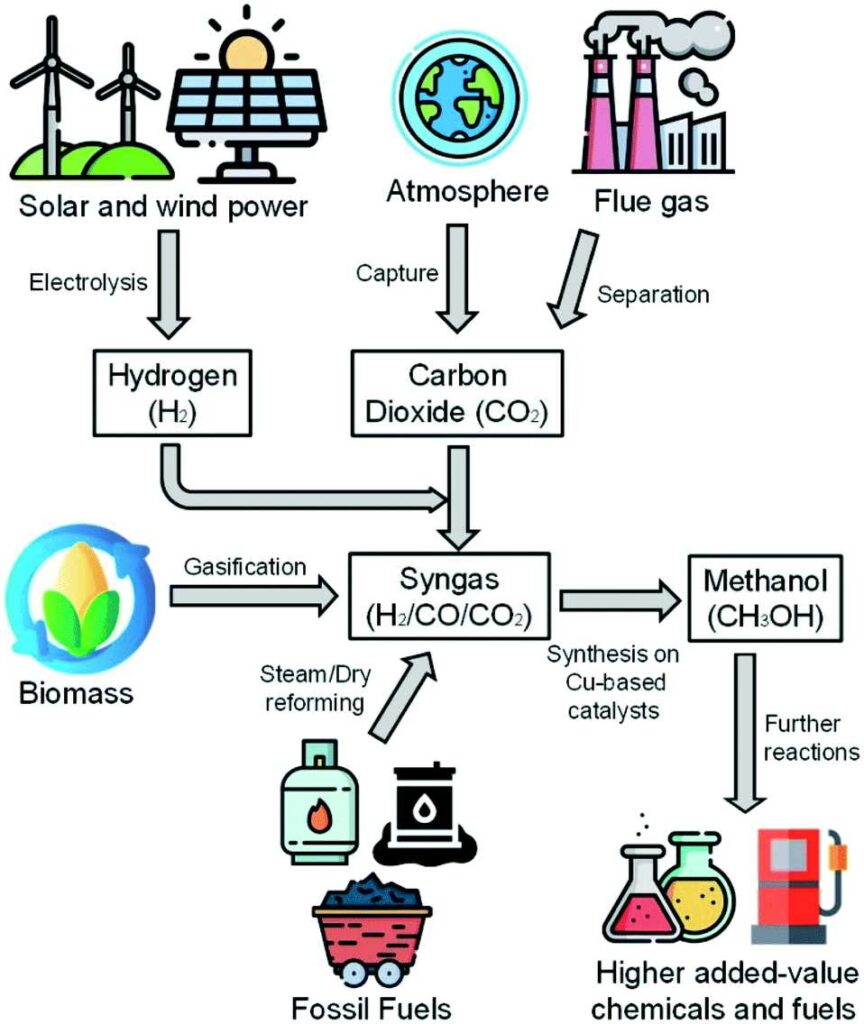
(From syngas to methanol synthesis)
Feedstock variability and gasification methods create diverse syngas compositions. Different raw materials yield varying levels of CO, CO₂, and H₂. For instance, biomass and coal generate distinct gas mixtures. Gasifier design and operating conditions further influence these ratios. Such fluctuations challenge operators and demand close monitoring.
An imbalanced syngas mix stresses catalyst performance and degrades product quality. High CO levels may poison catalysts, while excess H₂ can speed up unwanted reactions. These issues lower methanol yield and affect purity. Operators see a drop in efficiency and face higher operational costs when the gas blend shifts.
Real-time monitoring transforms process control. In-line analyzers track syngas composition continuously. Operators receive immediate alerts to adjust conditions. This proactive approach preserves catalyst life, optimizes reaction kinetics, and enhances methanol quality. In short, precise analysis helps maintain efficiency and boosts overall plant performance.
According to ESEGAS’ syngas analyzer IR-GAS-600, I make a table, which outlines the key technologies intergrated into syngas analyzer and their specific functions within methanol production facilities:
| Technology | Function in Methanol Plants |
| Infrared (lR) Detection | Measures concentrations of CO, CO₂, and CH₄, enabling precise control of syngas composition. |
| Thermal Conductivity Detection (TCD) | Analyzes H₂ levels, ensuring the correct H₂ to CO ratio for optimal methanol synthesis. |
| Electrochemical Sensors | Detect O₂ concentrations, preventing oxidation-related issues and ensuring safety in the production process. |
| Temperature Compensation | Maintains analytical stability across varying operational conditions, ensuring consistent and reliable data. |
| Real-Time Data Monitoring | Provides immediate feedback on syngas composition, allowing for swift adjustments to maintain process efficiency. |
These technologies make precise syngas analysis happen. By integrating these technologies, methanol plants can achieve enhanced control over their production processes, leading to increased efficiency, reduced operational costs, and higher product quality.
How to Implement Syngas Analyzers for Optimal Methanol Production?
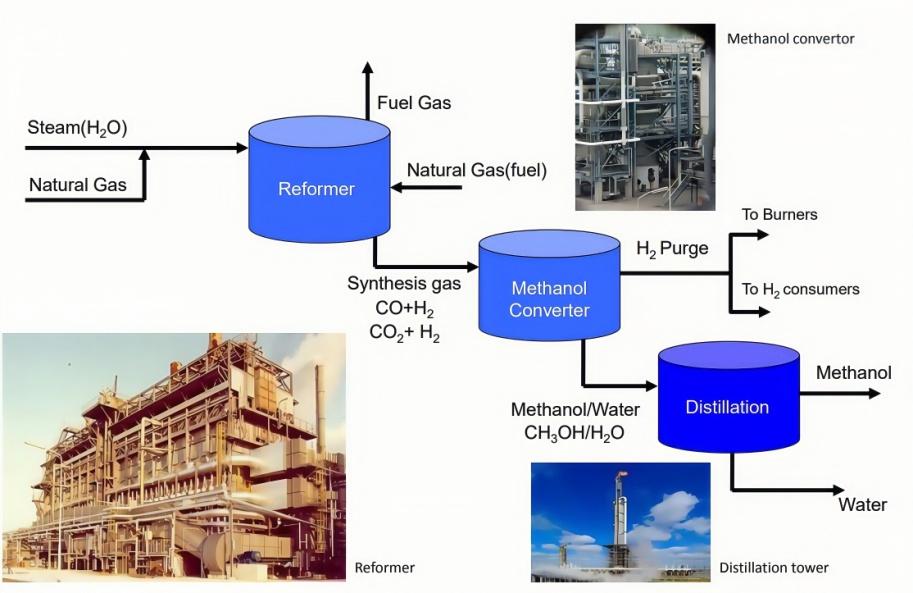
- First, integrate syngas analyzers directly into your production line.
Place sensors at critical points such as feedstock inlets and reaction zones. Use modular designs to simplify installation. Leverage real-time data connections with your control systems. This integration helps track variations immediately. Moreover, plan maintenance windows to avoid disruptions. Organize the workflow into clear stages to support smooth operation.
- Next, interpret the data to adjust process parameters.
Analyze readings with user-friendly software that displays trends and anomalies. Identify patterns like sudden shifts in CO or H₂ levels. Use this insight to tweak temperature, pressure, or catalyst feed. Timely adjustments help maintain an optimal gas blend. This proactive approach improves yield and reduces downtime.
- Finally, train your team to master the new tools.
Offer regular workshops and hands-on sessions. Provide clear manuals and quick-reference guides. Skilled personnel understand both the data and the equipment. This training builds confidence and improves overall plant performance.
What Challenges and Considerations Arise in Syngas Analyzers for Methanol Production?

Calibrating syngas analyzers is vital. Regular calibration keeps data accurate and reliable. Operators check sensor drift and schedule maintenance sessions. They also update calibration settings to match process changes. Such diligence minimizes errors and extends the lifespan of equipment.
Operational conditions vary and can affect analyzer performance. Temperature and pressure changes may alter readings. Other gas interferences sometimes skew data. Engineers monitor performance trends and adjust settings in real time. They also use advanced algorithms to filter out noise and ensure clean data.
Compliance with industry standards remains a constant challenge. Standards set clear guidelines for safety and efficiency. Companies follow strict testing procedures and document all adjustments. Regular audits and updates help meet regulatory requirements. This focus on compliance builds trust and enhances overall plant performance.
What are the Future Trends in Syngas Analyzers for Methanol Production?

Advanced analyzer technologies drive change. New sensor designs boost sensitivity and specificity. These tools detect minor gas components and subtle shifts quickly. Improved optics and enhanced signal processing deliver clear, accurate readings. Such advances open new avenues for quality control and efficiency. They also lower operational costs.
Next, artificial intelligence and machine learning reshape process optimization. Smart algorithms analyze data in real time and spot hidden trends. These tools predict changes in syngas composition before they impact production. They help operators fine-tune temperature, pressure, and catalyst settings. In addition, predictive models support proactive maintenance and reduce downtime. This integration creates a smarter, more agile production environment.
Finally, remote monitoring and control systems show great promise. Internet-connected analyzers offer continuous oversight from any location. Operators enjoy instant alerts and control adjustments. This connectivity streamlines troubleshooting and minimizes on-site visits. Overall, these trends promise to revolutionize methanol production through efficiency and innovation.
Conclusion
To recap, syngas analyzers play a critical role in methanol production. They offer real-time insights into gas composition. This information drives precise process control and boosts overall performance. Engineers rely on these devices to keep reactions balanced and yields high.
Looking ahead, the industry must embrace continuous improvement. Adopting advanced analytical technologies will further optimize production. Innovators must explore new sensor designs and smart algorithms. In doing so, they drive progress, improve efficiency, and secure a competitive edge in the methanol market.
If you want to know more details, contact with us please!








